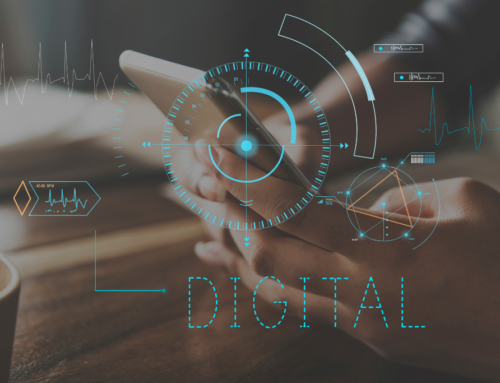In a world where digitalization is recasting industry after industry, healthcare is certainly not an outlier. Traditionally perceived as a field resistant to rapid shifts, healthcare has witnessed seismic changes over the last few years, particularly catalyzed by the COVID-19 pandemic and the democratization of high-tech solutions. Explore how digital transformation in healthcare is likely to expand in years to come in our insightful article.
The result?
An enhanced patient experience, epitomized by remote consultations, easy medical record accessibility, and increasingly accurate diagnostics. However, as transformative as these changes are, they come accompanied by an array of challenges, chiefly data security and privacy issues.
Overview of digital transformation in healthcare
At its core, digital transformation in healthcare is the symbiotic integration of cutting-edge technology with existing medical frameworks. It mirrors the technological metamorphosis seen across manufacturing, automotive, and other sectors, but with one crucial distinction: the unerring focus on bridging the communicative chasm between patients, healthcare providers, and medical infrastructure. The overarching objective is not just to enhance operational efficiency but to offer tailored, real-time, patient-centric solutions.
Why this sudden clamor for digital transformation within the healthcare sector? The motives are as follows:
-
Focus on optimizing healthcare services for all
-
Enable effective collaboration and communication across healthcare service providers and tech partners
-
Empower patients and improve their engagement via digital channels
-
Reduce paperwork through streamlining administrative tasks
-
Generate data-driven insights to care based on their health conditions
-
Facilitate remote consultations and telemedicine, improving convenience and access to care
-
Drive innovation and research for the development of new technologies and treatments
The significant rise of blood and glucose trackers, inbuilt trackers in ambulances, shorter route map navigation embedded software, etc., are just a glimpse of what’s more to come!
Foreseen challenges halting digital transformation in healthcare
According to Stratista, the global spending on digital transformation in healthcare would be reaching $3.4 trillion worldwide by 2026 and the same research says that Denmark is more competitive. However, in countries like Mid and Eastern Europe, India, and North America, the transformation is happening slowly while most countries haven’t started these initiatives yet!
Here are the following reasons for the slower development in healthcare technology:
- Cybersecurity concerns: As healthcare institutions amass a growing trove of patient data, the risk of cyber-attacks escalates. Regulatory frameworks like HIPAA in the United States and GDPR in Europe serve as safeguarding measures, but they can’t eliminate the risk.
- Investment considerations: Most health tech leaders invest their time in increasing their profits and other aspects. They are less aware of the value associated with partnering a software development company to embrace digital transformative initiatives. They need to understand the scalable ecosystem, increased revenues, improved operational efficiencies, and innovative edge that it can offer for their business. If they overcome their limiting barriers and invest in digital scope, the more is the opportunity for healthcare to thrive in digital landscape.
- Moving at a snail’s pace: It is either healthcare professionals, especially the higher management aren’t proficient in technology or the ageing workforce in these organizations aren’t convenient to adapt to new software systems. And another reason being – healthcare professionals work on critical schedules. So, they take time learning and upgrading with the new systems.

Digital transformation initiatives in healthcare
Changing from time to time with the evolving landscape in healthcare can’t be possible. That’s why we have identified the following three trends that could transform entire healthcare and health technology for years to come.
AI and Machine Learning algorithms
Artificial Intelligence (AI) and Machine Learning (ML) have found pragmatic applications in healthcare that are as transformative as they are critical. Global tech giants like IBM and Microsoft, along with a burgeoning startup ecosystem, are ardently developing algorithms and tools designed to enhance various facets of medical care.
The potency of AI lies in its inherent capability to adapt and evolve through exposure to data. While there are legitimate concerns about data ownership and secure storage, the prospect of mining this largely untapped resource is tantalizing. The predictive power it confers upon medical diagnostics and treatment customization is game-changing.
According to the 2022 Future Health Index by Philips, a striking 60% of healthcare executives place AI high on their investment priorities. It’s pivotal to underscore that the role of AI isn’t to supplant healthcare professionals but to augment their capabilities, streamlining processes and elevating the standard of care.
Telemedicine
Telemedicine has transformed from a pandemic-induced necessity into a permanent fixture in the healthcare spectrum. Facilitating medical consultations through various digital mediums—phone calls, video conferences, or text chats—telemedicine has democratized access to quality healthcare.
Remarkably, surveys indicate that 80% of consumers have engaged with telemedicine services at least once, a statistic that shows no signs of stagnating. Currently, telemedicine is offered in two distinct forms:
- Synchronous Telemedicine: This involves real-time, bidirectional communication between the patient and the healthcare provider.
- Asynchronous Telemedicine: In this modality, medical data is collected and later analyzed by healthcare professionals at their convenience.
Internet of Things (IoT)
While telemedicine captures the limelight for its software-driven innovations, the Internet of Things (IoT) is quietly revolutionizing healthcare through sophisticated hardware applications. From wearables that monitor cardiac rhythms to specialized sensors that track the tremors in Parkinson’s patients, IoT is making remote monitoring not just feasible but highly efficient.
Particularly impactful for the elderly or those residing in remote areas, these devices provide an invaluable data stream that enables medical professionals to make timely, life-saving decisions. With IoT, healthcare is not confined to the four walls of a hospital but can be as ubiquitous as the devices we carry.
As healthcare executives need to adapt these changing scenarios, it depends on how and when they are likely to embrace such transformation initiatives. However, investment on developing innovative solutions strategically as a step towards digital transformation makes them highly competitive.


